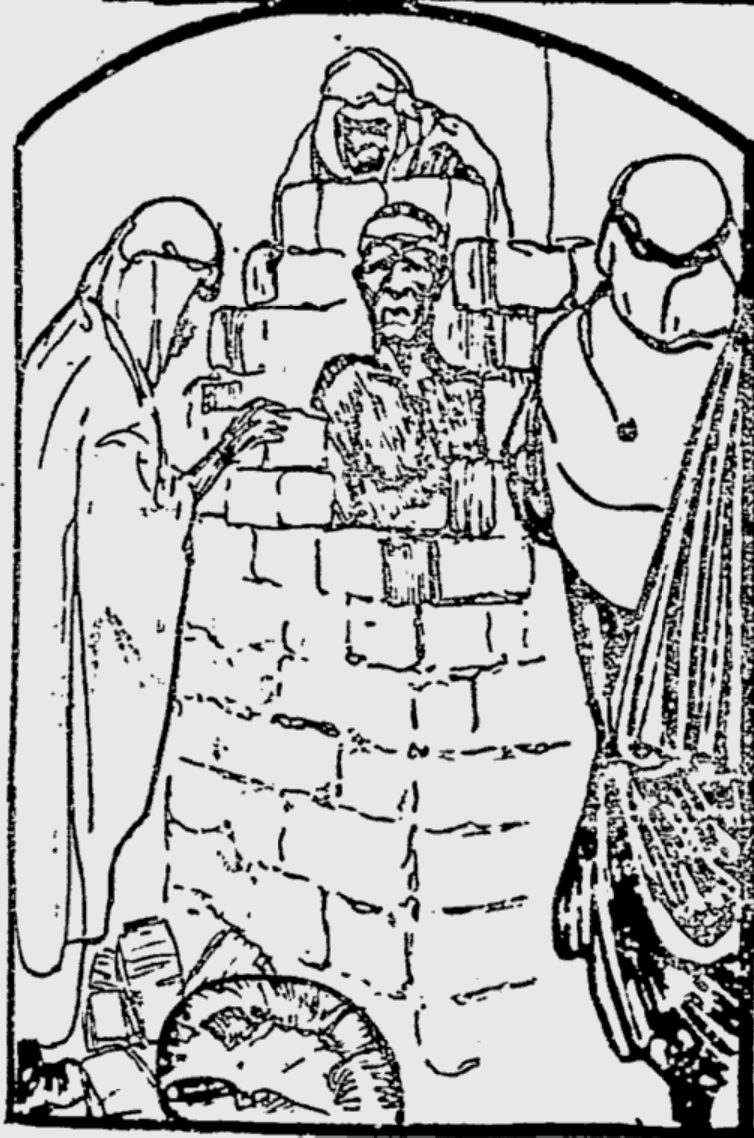Saint Benedict Medal
Saint Benedict Medal is a Christian sacramental medal containing symbols and text related to the life of Saint Benedict of Nursia, used by Roman Catholics, as well as Anglicans, Lutherans, and the Orthodox Church. The medal is one of the oldest and most honored medals used by Christians and due to the belief in its power against evil is also known as the "Devil-Chasing Medal".
History[edit | edit source]
The origins of the Saint Benedict Medal date back to 1880, when the medal was struck to commemorate the 1400th anniversary of the birth of Saint Benedict. However, the medal's design incorporates elements that are much older, some of which have been associated with Saint Benedict since the Middle Ages. The reverse side of the medal bears an image of Saint Benedict holding a cross in one hand and his Rule in the other. Around the edge of the medal, the words "Eius in obitu nostro praesentia muniamur" (May we be strengthened by his presence in the hour of our death) can be found. The other side of the medal contains a cross, the word PAX (peace), and the initial letters of the Latin words constituting the exorcism prayer against Satan.
Symbolism[edit | edit source]
The Saint Benedict Medal has rich symbolism. The cross on the medal represents the Christian's salvation through Christ's sacrifice. The letters CSPB stand for "Crux Sancti Patris Benedicti" (The Cross of [Our] Holy Father Benedict), and CSSML NDSMD on the perimeter of the medal stand for the Latin prayer: "Crux sacra sit mihi lux! Non draco sit mihi dux!" (May the holy cross be my light! May the dragon never be my guide!). The reverse side of the medal also includes the letters VRSNSMV - SMQLIVB, which stand for "Vade retro Satana! Nunquam suade mihi vana! Sunt mala quae libas. Ipse venena bibas!" (Begone, Satan! Never tempt me with your vanities! What you offer me is evil. Drink the poison yourself!).
Usage[edit | edit source]
The Saint Benedict Medal is used by Christians for protection against evil and temptation. It is often incorporated into rosaries and other devotional items, and is frequently worn as a pendant. The medal is also placed in homes, cars, and workplaces for protection. The blessing of the Saint Benedict Medal is performed by Benedictine priests, invoking the protection of Saint Benedict for the person who uses the medal and for his or her family.
Controversy[edit | edit source]
While the Saint Benedict Medal is widely respected and used within various Christian denominations, its use has also been the subject of controversy. Some critics argue that the medal is used superstitiously, attributing to it powers that belong only to God. The Catholic Church teaches that sacramentals like the Saint Benedict Medal are not magical objects but are meant to help the faithful to remember God's presence and to inspire them to pray and to act in charity.
Conclusion[edit | edit source]
The Saint Benedict Medal remains a popular sacramental in the Christian tradition, valued not only for its rich symbolism and historical significance but also for its use as a means of seeking God's protection and favor. It serves as a reminder of the power of faith and the protection that God offers to those who believe.
Search WikiMD
Ad.Tired of being Overweight? Try W8MD's physician weight loss program.
Semaglutide (Ozempic / Wegovy and Tirzepatide (Mounjaro / Zepbound) available.
Advertise on WikiMD
|
WikiMD's Wellness Encyclopedia |
| Let Food Be Thy Medicine Medicine Thy Food - Hippocrates |
Translate this page: - East Asian
中文,
日本,
한국어,
South Asian
हिन्दी,
தமிழ்,
తెలుగు,
Urdu,
ಕನ್ನಡ,
Southeast Asian
Indonesian,
Vietnamese,
Thai,
မြန်မာဘာသာ,
বাংলা
European
español,
Deutsch,
français,
Greek,
português do Brasil,
polski,
română,
русский,
Nederlands,
norsk,
svenska,
suomi,
Italian
Middle Eastern & African
عربى,
Turkish,
Persian,
Hebrew,
Afrikaans,
isiZulu,
Kiswahili,
Other
Bulgarian,
Hungarian,
Czech,
Swedish,
മലയാളം,
मराठी,
ਪੰਜਾਬੀ,
ગુજરાતી,
Portuguese,
Ukrainian
Medical Disclaimer: WikiMD is not a substitute for professional medical advice. The information on WikiMD is provided as an information resource only, may be incorrect, outdated or misleading, and is not to be used or relied on for any diagnostic or treatment purposes. Please consult your health care provider before making any healthcare decisions or for guidance about a specific medical condition. WikiMD expressly disclaims responsibility, and shall have no liability, for any damages, loss, injury, or liability whatsoever suffered as a result of your reliance on the information contained in this site. By visiting this site you agree to the foregoing terms and conditions, which may from time to time be changed or supplemented by WikiMD. If you do not agree to the foregoing terms and conditions, you should not enter or use this site. See full disclaimer.
Credits:Most images are courtesy of Wikimedia commons, and templates Wikipedia, licensed under CC BY SA or similar.
Contributors: Prab R. Tumpati, MD


